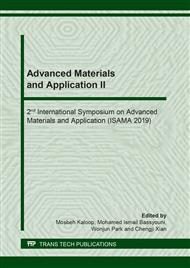p.146
p.155
p.161
p.170
p.177
p.185
p.191
p.198
p.204
Failure on Bearing Cooler Coils Connector of Hydroelectric Power Plant
Abstract:
Bearing cooler coils connector of 175 MW hydropower plant experienced premature leaks after one year operation and caused an unscheduled shutdown. To avoid the same failure in the future, the leaking bearing cooler coils connector was investigated. Nondestructive tests, such as chemical composition analysis, hardness test, metallographic test, characterization of the filler brazing by scanning electron microscopy – energy dispersive X-ray spectroscopy were conducted. The results confirmed that the bearing cooler coils connector consisted of two types of material namely the flange material which was made of stainless steel 304 and the pipe material which was a Cu/Ni 90/10 and were joined together using brazing process. It was a clearly evidence that leaks occurred in the brazing area and the leakage was due to improper brazing process. It was shown by the excessive gap and a lot of porosity.
Info:
Periodical:
Pages:
185-190
Citation:
Online since:
June 2019
Keywords:
Price:
Сopyright:
© 2019 Trans Tech Publications Ltd. All Rights Reserved
Share:
Citation:


